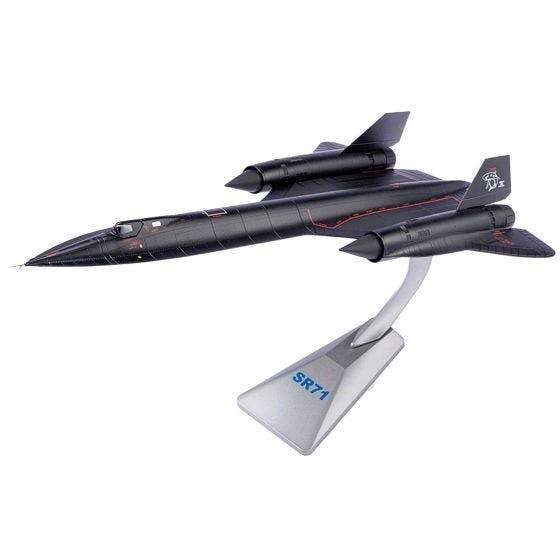Beginning in the 1960s, development was started by Lockheed Martin on a high altitude, high speed aircraft that could go far above the ranges of any enemy, whether it be ballistic missiles or aircraft like the MiG-25. In their “Skunk Works” division, a low-observable and low drag shape formed the iconic design, shaped to augment the small, pointy wings of the A-12 prototype while carrying a large amount of fuel. First seeing flight in 1962 over Groom Lake, it quickly was adapted to test several different variants. These included three interceptor prototypes (YF-12), two drone carrier platforms (M-21), and the rest as the A-12 designation, fitted with cameras and a side facing radar. Proposals also included a request for a high altitude bomber variant, but this never was developed. The A-12 only served for a few years, being retired in 1968 due to budget concerns and the arrival of the forthcoming derivative, the R-12. When the design changed over, the original designation given to the bomber version of the A-12 was B-71, but this was quickly changed as it never became a high altitude bombing platform. The name was instead changed to SR-71, which everyone knows it by. Compared to the prototypes, the SR-71 had a 6 foot longer fuselage, totalling to just over 107 ft in length. Width stayed largely the same at around 56ft, with the enlarged body intended to hold more fuel and sensor equipment. The CIA’s version had only one pilot to make more room for better cameras, while the USAF’s own R-12 had a worse camera and less instruments internally. 32 of the SR-71 were manufactured, spread across three variants; A being the standard, B as a trainer variant, and the C version was a hybrid trainer platform built out of multiple different A-12s. These models served from the late 1960s until just before the 21st century, bringing in valuable, top secret info of military outposts, strategic movements, and weapons positions. One of the SR-71s, serial number 61-7976, flew almost 1000 sorties with 257 operational missions. Total for all 32 of the type included 3,551 missions, over 17,000 sorties, and more than 53,400 flight hours. Even so, the SR-71 was never brought down by enemy fire, though there were lots of structural and mechanical failures. In total, 12 of the 32 manufactured were lost to accidents, whether it be midair break-ups, undercarriage failures, avionics failures, or loss of control. All SR-71s were phased out by 1999, before any more serious or fatal incidents could occur. Even so, this unique model fills a space that everyone wants in the history books, among the fastest aircraft ever to fly. The model itself measures 17.75” in length by 9.25” in width, at a scale of 1/72. It is a large presence on every shelf, appealing to any collector interested in reconnaissance aircraft.
• Features an accurate paint scheme, engraved panel lines, and reproduced grille patterns on the surface.
• Paint includes printed on details, instead of waterslide decals that fade over time.
• Includes removable landing gear and a display stand to show the aircraft in flight.
• Measures 17.75” in length by 9.25” in width, creating a large presence in any display.

